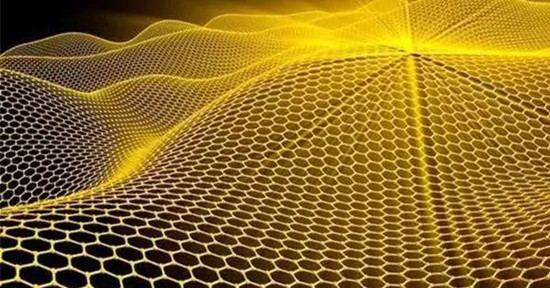HC Plastics News: Graphene has the reputation of being the king of new materials, and the competition among graphenes in the world has intensified. On the 8th, the Document Information Center of the Chinese Academy of Sciences and the American Chemical Abstracts Service jointly issued the "Graphene R&D Situation Monitoring Analysis Report" (hereinafter referred to as the "Report"), adding a detailed "comment" to the competition.

Graphene is a magical two-dimensional material. It has only one carbon atom thickness and is a flat film composed of carbon atoms. In 2004, two British physicists successfully separated graphene from graphite using micromechanical stripping methods, confirming that graphene crystals can truly exist independently. The two also won the Nobel Prize in Physics in 2010.
As the thinnest material in the world, graphene has excellent mechanical, thermal and electrical properties. The research boom of graphene has formed in the world, because graphene "is very likely to be a new technology and a new industrial revolution that will lead to disruptive future materials."
Graphene research and development is entering a period of rapid development after 2010. The "Report" statistical analysis of more than 70,000 graphene papers published worldwide, more than 20,000 graphene patents, found that more than 50% of the world's papers and patents are mainly published and applied in 2014-2016. Liu Xiwen, deputy director of the Literature and Information Center of the Chinese Academy of Sciences, said at the press conference that in the past three years, graphene paper publications and patent applications have continued to rise, and their basic research and technology applications are still developing rapidly.
Statistics show that the top five countries produced by graphene papers are China (excluding Hong Kong, Macao and Taiwan), the United States, South Korea, Japan and India, and their total papers account for 64.3% of the global total; the top five patent applications The country is China, South Korea, the United States, Japan and Germany. The total amount of patents in the five countries accounts for more than 90% of the global total. “China, the United States, South Korea, Japan and other countries compete for graphene frontier application technology. The United States and Japan published relevant papers and applied for patents earlier, and Chinese papers and patent output have led the world.â€
From the flow of patent applications in these five countries, graphene patents flow to the United States and China. Although the number of patent applications in China is high, the proportion of patents in China in Korea, Japan, the United States and Germany is only 2.3%; and the proportion of patents in Korea, the United States, Japan and Germany in each of the other four countries is 27.8. %, 24.8%, 32.3%, 45.3%. “Relatively, the layout of Chinese patents in other countries is relatively weak.â€
According to the report, China, the United States, South Korea and Japan have formed technological advantages in the global competition for graphene.
Research papers and patents on graphene are mainly distributed in the fields of electrical phenomena, electrochemistry, radiation and thermal energy technology, optics, electronics, mass spectrometry and other related properties, surface chemistry and colloids, and silicates. In recent years, the research and development of graphene has increased in the fields of electrochemistry, radiation and thermal energy, optical, electronic, mass spectrometry and other related fields, biochemical methods, plastics production and processing, and electrochemistry. Statistics show that papers published by Chinese institutions focus on applications such as sensors, electronics and optoelectronics, and batteries; papers published by US agencies focus on applications such as optoelectronic performance, electronic structures, thin film transistors, and semiconductor devices; papers published by Korean institutions focus on Research on capacitors, etc.; papers published by Japanese institutions focus on research in electrical performance.
The "Report" pointed out that in just 10 years, the research on graphene has extended from the basic research of material mechanics and electronic properties to applications such as batteries, capacitors, semiconductors, sensor devices, and polymer nanocomposites. The field will continue to expand. As Bai Chunli, president of the Chinese Academy of Sciences, said, graphene is a subversive material. "Researchers and industry have high hopes for technological breakthroughs and disruptive applications." 
Editor in charge: Ye Dan
Stainless steel sink is a best optimization for the kitchen use with best durability and adaptability. Stainless steel sink double is with double bowl on the sink, to provide the kitchen user more room to finish different cleaning jobs at the same time, and make job more organized with stainless steel sink with double . And its different installation ways like under mount, top mount, drop in, and apron front can satisfy your kitchen cabinet design needs. A good stainless steel sink can make your kitchen life more easy and with pleasure!
Double Bowl Handmade Sinks,Double Bowl Kitchen Sinks,Double Bowl Stainless Steel Kitchen Sinks,Double Sink Kitchen
Guangdong Huayou Hardware Products Co.,Ltd , https://www.gdhuayouhardware.com